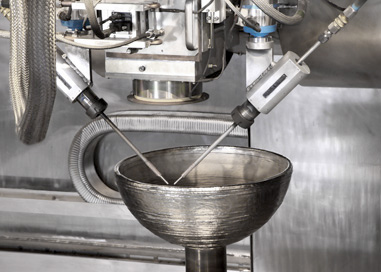Sciaky has long been 3D printing large scale objects with its Electron Beam Additive Manufacturing (EBAM) technology, typically for private and government customers in the aerospace and defense industries. Last year, however, the company began selling its EBAM system publicly and it seems that that move has paid off as, today, the Phillips Service Industries subsidiary has launched a new website showcasing an expanded line-up of large-scale metal 3D printers.

- EBAM 150: 146” (3708 mm) wide x 62” (1575 mm) deep x 62” (1575 mm) high
- EBAM 110: 106” (2692 mm) wide x 47” (1194 mm) deep x 63” (1600 mm) high
- EBAM 88: 84” (2134 mm) wide x 35” (889 mm) deep x 63” (1600 mm) high
- EBAM 68: 64” (1625 mm) wide x 25” (635 mm) deep x 63” (1600 mm) high
This massive family all print with the same speed as their predecessor and offer the same features, including closed-loop control. And, given the price of such large-scale systems, Sciaky has introduced a leasing program to make their machines, including their non-additive electron beam welders, more accessible. Using wire feedstock, the EBAM systems are capable of 3D printing with all of the following metals: Titanium and Titanium alloys, Inconel 718, 625, Tantalum, Tungsten, Niobium, Stainless Steels, 2319 and 4043 Aluminum, 4340 Steel, Zircalloy, 70-30 Copper Nickel, and 70-30 Nickel Copper.
In addition to the new site, the company put out the following video to demonstrate the use of their technology with long-time partner Lockheed Martin to create titanium propellant tanks for satellites. Due to the welding technique implemented by the EBAM system, which allows for the size and speed possible with the technology, intensive post-processing is necessary to bring parts to specification, but the potential for their systems is massive. And, now that the EBAM technology is made available at somewhat smaller scales, with financing available, it’s possible that we’ll see a greater number of companies use it to create some impressive things.



